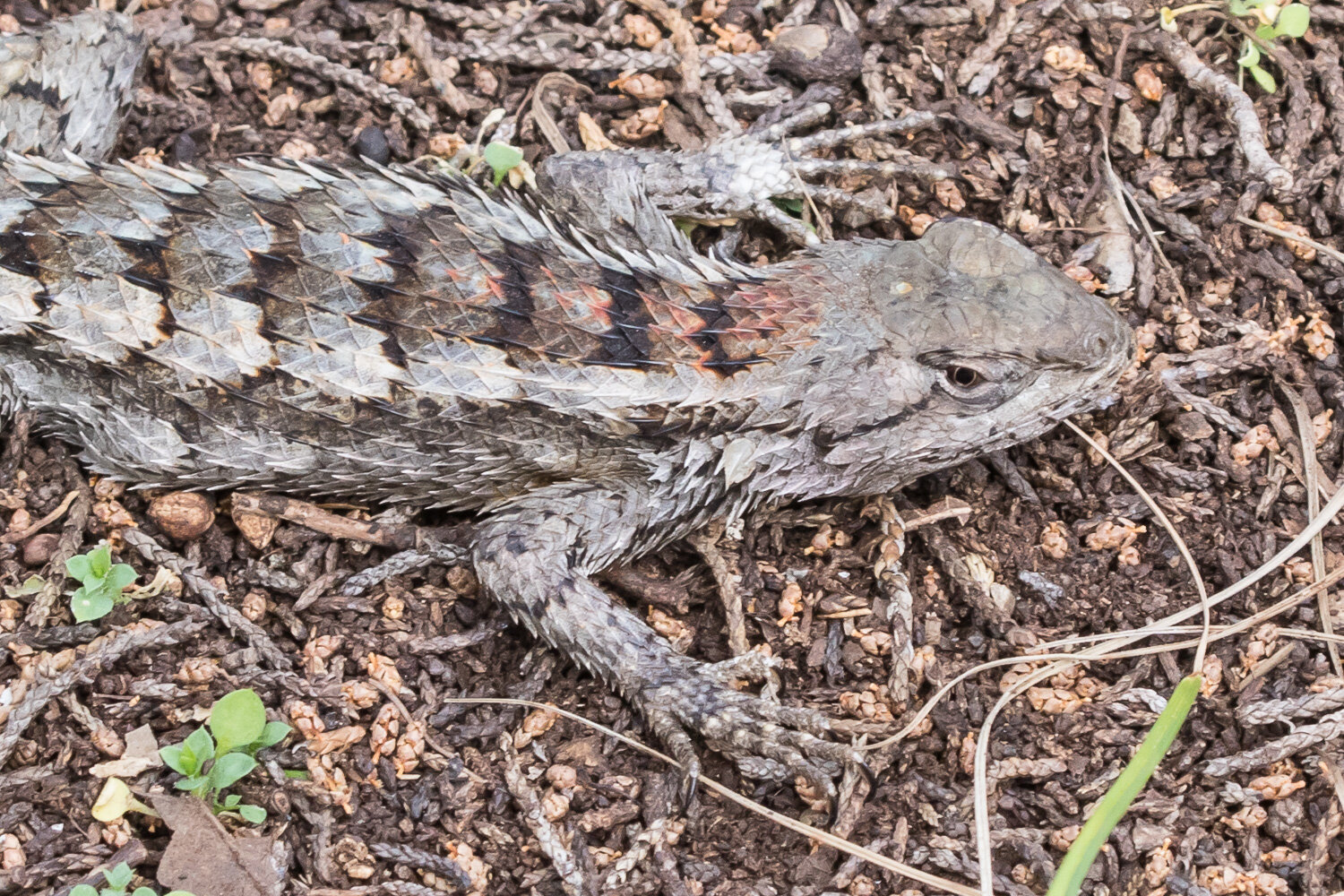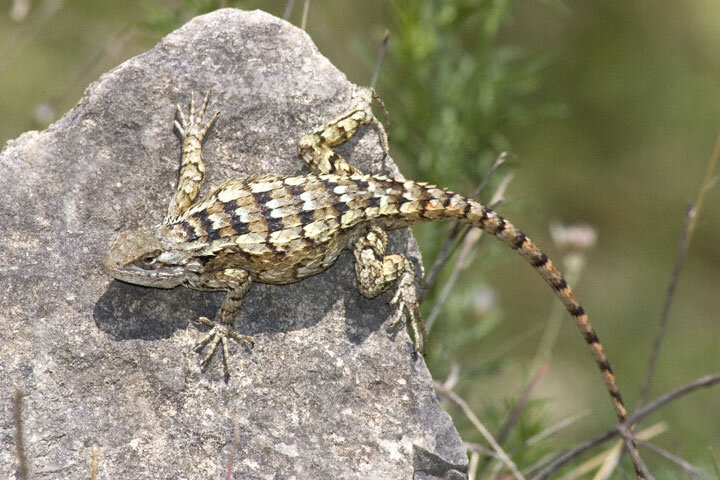Texas Spiny Lizard


Kingdom: Animalia Phylum: Chordata Class: Reptilia Order: Squamata Family: Phrynosomatidae Genus: Sceloporus
Species: Sceloporus olivaceus
The Texas Spiny Lizard is a master at camouflage that hides in plain sight. It spends most of its time on tree trunks, standing upside down on the vertical surface and waiting for insects to crawl by. To the trained eye, this species is commonly seen on the Regents Campus during the summer months. It has long nails that are accustomed to clinging to tree bark, and its scaly pattern makes it the ideal ambush predator. If handled, it may thrash about, scratch, and bite. In proportion to its size, the Texas Spiny Lizard has a stronger bite than that of a Green Anole or a Mediterranean Gecko, but it will not cause serious damage. Its tail may fall off if pulled, and although it grows back, it will be shorter than the first. To find this Lizard, observe the oak trees around campus and look for a head peeking out from the tree trunk near the tree’s base.
Conservation status: Least concern
Description: Grey in color with black, white, or rusty colored clothing patterns down the back; patterns vary locally; they blend in with the bark of trees; males have blue patches on the underside while females have white bars across their backs; scales have a spiny texture and they have long claws for climbing trees
Size: Ranges from 7.5 to 11 inches in length
Diet: A variety of small insects
Habitat: Primarily a forest species; often found on medium to large tree trunks
Defensive behavior: Will run away when approached; thrashes wildly and bites if harassed; the tail may fall off if pulled
Credit source: The University of Texas Biodiversity Center